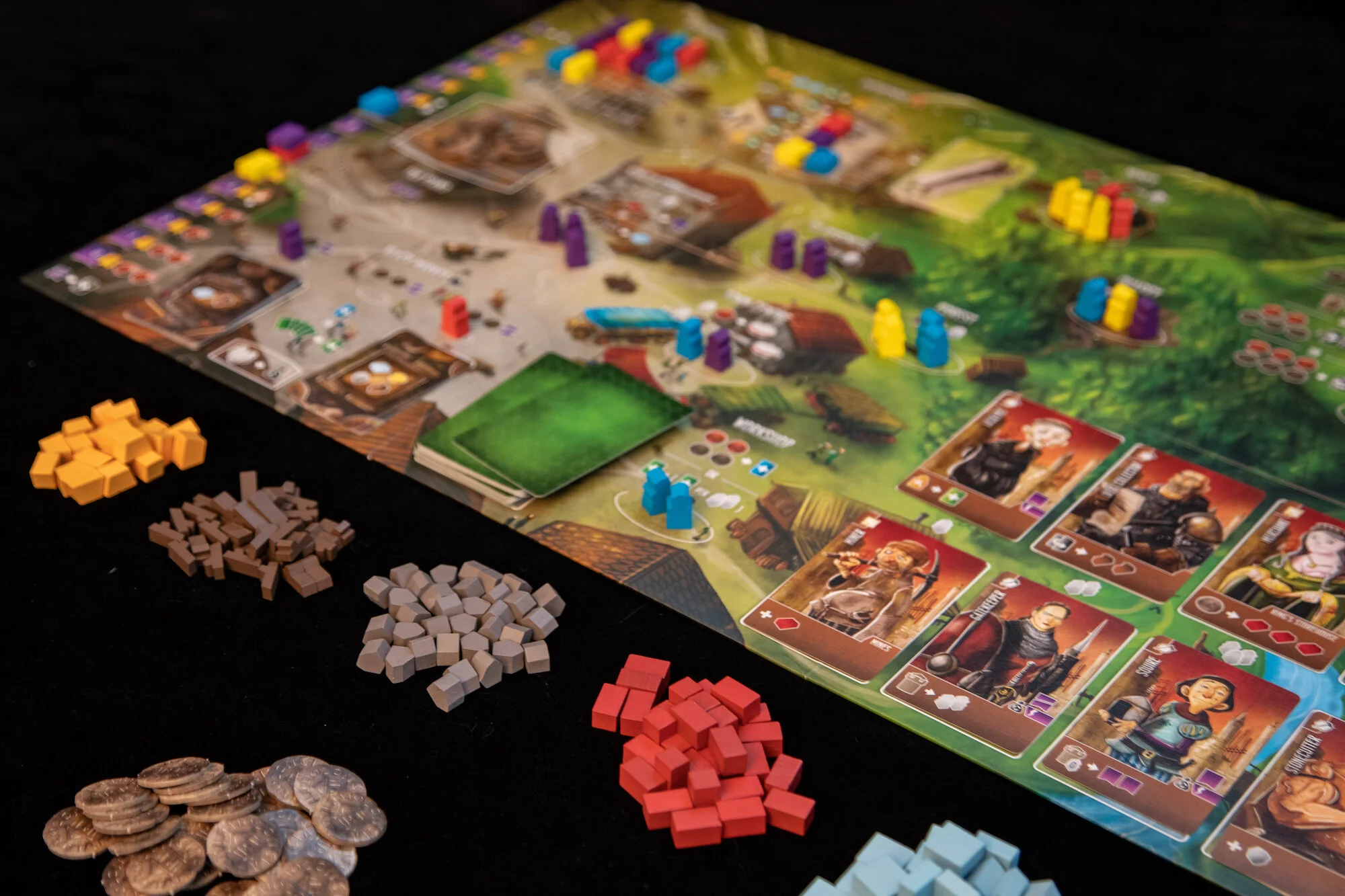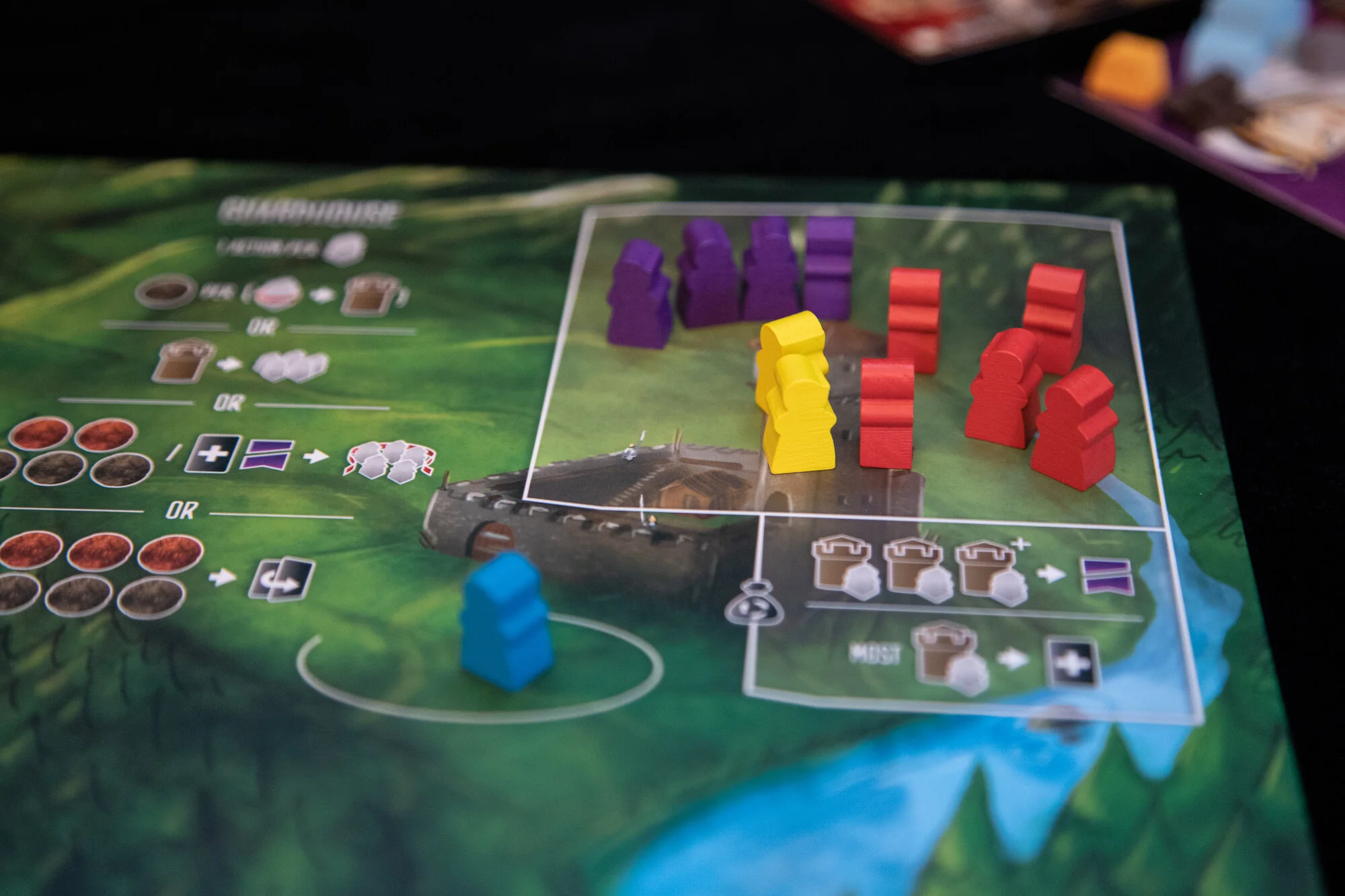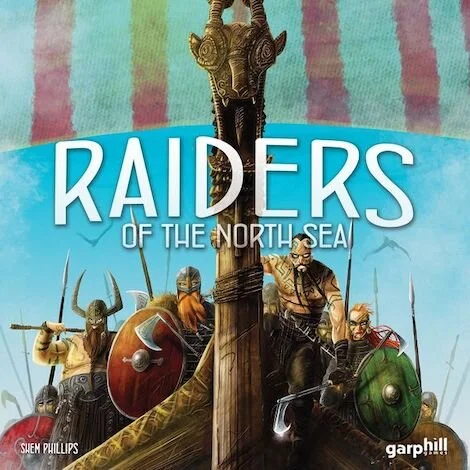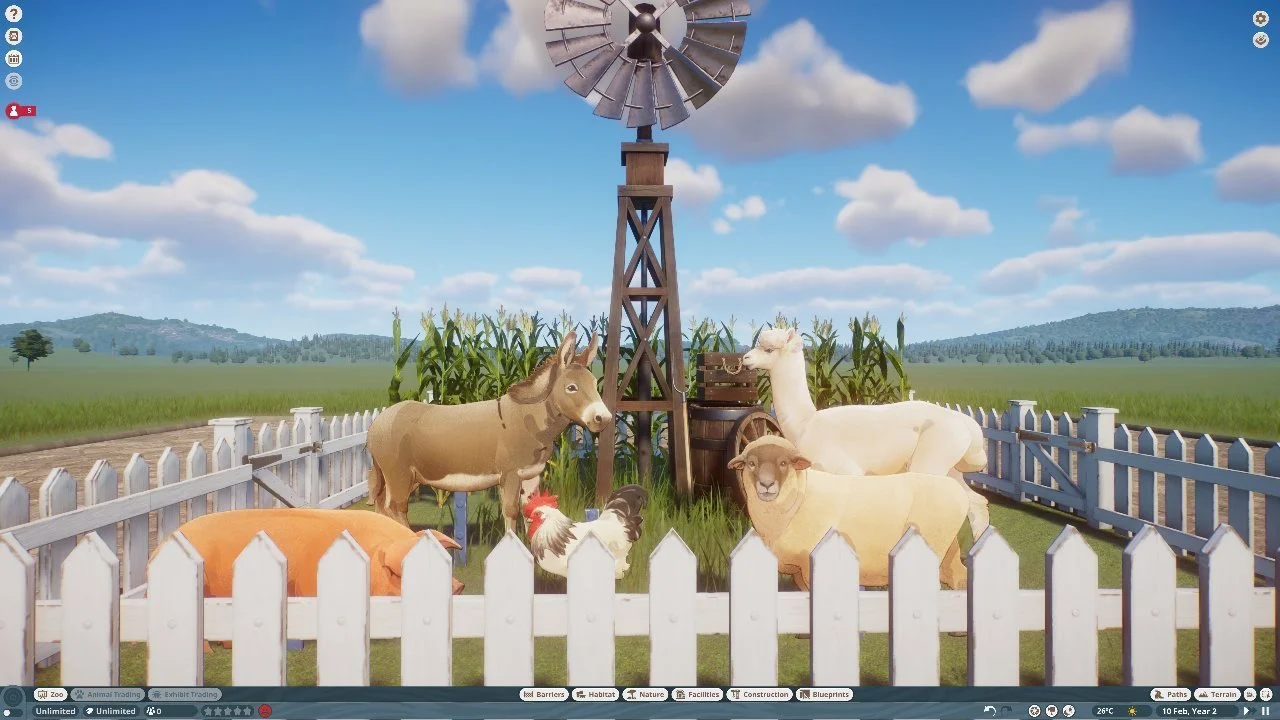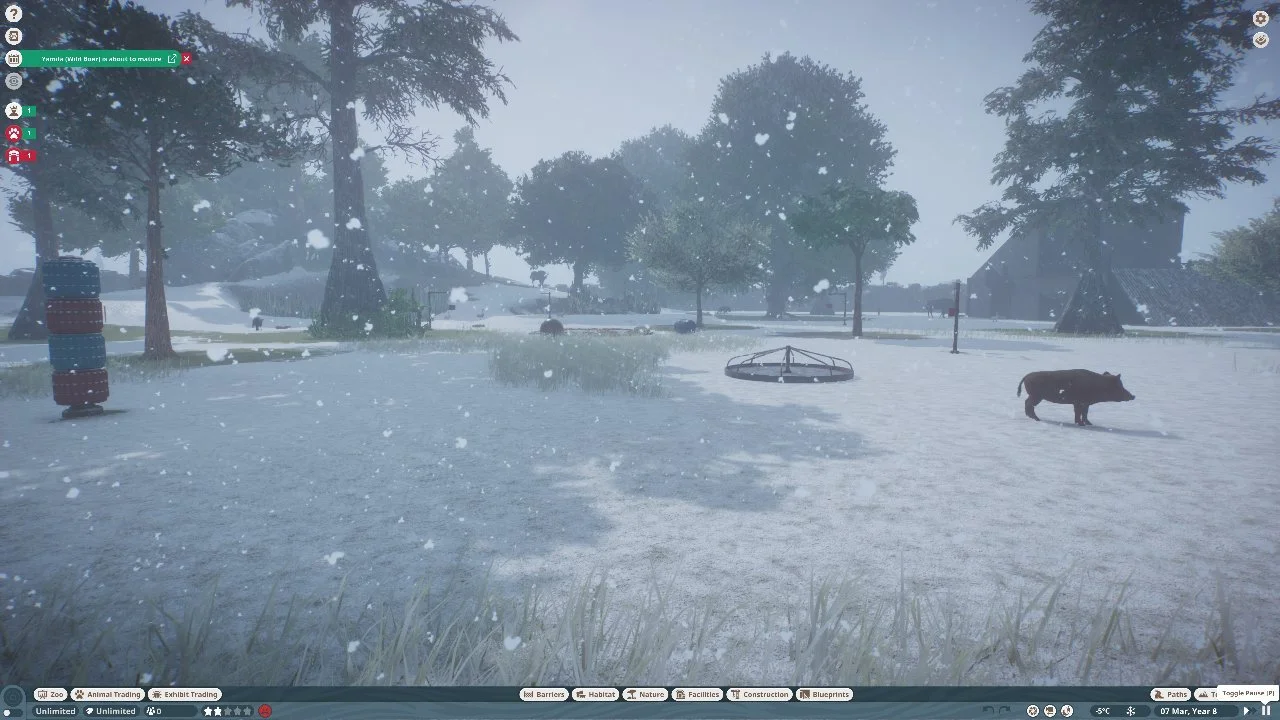Designed by Shem Phillips and SJ Macdonald, Architects of the West Kingdom is part of the West Kingdom Trilogy from Renegade Game Studios and Garphill Games, and it represents an ingenious manipulation of traditional worker-placement rules in the midst of a competitive strategy game. It achieves this with a smaller footprint than other classics like Lords of Waterdeep, Tzolkin: The Mayan Calendar, and others in the genre.
The board game supports one to five players and it will finish in under ninety minutes, so it’s approachable for newcomers but robust enough for avid tabletop gamers to enjoy as well.
To win in Architects of the West Kingdom, you need to score the most victory points at the end of the game. When pursuing victory points in a competitive game, the best-designed games offer multiple routes for players to explore, and that’s one reason why this game excels in providing excitement and possibilities for gamers. You can gain victory points by constructing buildings or advancing work on the cathedral. But you can also increase your architect’s virtue or hire advantageous apprentices or accrue certain resources. All of them contribute to the endgame and players might choose different paths along the way.
Buildings won’t construct themselves, though, so let’s get to work and see what transpires in Architects of the West Kingdom.
STORY
Monarchs frequently have some fixation on building monuments or towering buildings to signify the power and might of the empire, and the king of the Carolingian people is no different. He envisions a glorious construction, and he needs skilled workers to achieve it.
Architects of the West Kingdom is set at the end of the Carolingian Empire, circa 850 AD. As royal architects, players compete to impress their King and maintain their noble status by constructing various landmarks throughout his newly appointed domain. Players need to collect raw materials, hire apprentices, and keep a watchful eye on their workforce. These are treacherous times, and rival architects will stop at nothing to slow your progress. Will you remain virtuous, or be found in the company of thieves and black marketeers?
What kind of worker are you? Will you stop at nothing to win or will you uphold your virtuous principles while contributing to the King’s cathedral?
GAMEPLAY
In many of the worker-placement games I’ve played over the years, the game mechanics work similarly despite vast differences in theme or design. A small number of workers are available for distribution around the board and their placement will perform actions to assist in pursuing objectives. As the game progresses, players might receive a few more workers to expand their reach as the game nears the end. But, ultimately, a limited number of workers restricts what locations are visited and what choices are made by a player.
Architects of the West Kingdom upends that trend by giving players all twenty of their workers at the beginning of the game. Every location is available and players have enough workers to visit all of them.
So how does the game balance the freedom to play anywhere with the right weight of strategy to entice and reward players?
The more workers you have at a location, the more resources or actions are available to you on your turn. It’s a clever game mechanic that means investing in certain locations will reap increasing benefits. But that gradual rise in production and utility is tempered by the ability to capture workers, including your own, before detaining them in the town prison.
The gameplay is rhythmic. You build momentum toward a certain project by assembling workers at the requisite locations before players send them to the prison. Once you replenish your workforce, allocate your resources and start a new project or objective. The ebb and flow seem natural, but it innovates on the worker-placement genre in an exciting way.
And those actions which reset a player’s focus, with purpose or by way of aggression, tend to feel at home within the thematic world of competing architects trying to garner respect and reward from the king.
There are other elements in Architects of the West Kingdom that further reinforce the pattern of oppositional forces. Become too virtuous and you risk not being able to profit from the Black Market. Become too greedy or criminal and you cannot contribute to the cathedral. Hire only laboring apprentices and you won’t be able to benefit from situational abilities.
Everything in the game comes with a tradeoff. Rely too much on one strategy and you might fail to capitalize on the full potential in the game. It’s a balancing act that excites and challenges. In the first game I played, the two players who focused heavily on high virtue scores and contributions to the cathedral actually tied for last place while the two players who maintained a mid-level virtue score while building, advancing the cathedral, and accruing other resources won first and second place.
And that defied my expectations but in a satisfying and informative way.
Players must remember three central concepts that drive gameplay in Architects of the West Kingdom—investing workers in different locations, capturing workers to disrupt the state of the board, and attaining or losing virtue in the process. Once you are able to navigate through those three strategical considerations, you’ll be able to understand the game and outwit other players.
VISUALS
Photo credit: Bert Hui on BGG
The visual style of the game matches other titles in the West Kingdom Trilogy, as well as the North Sea Saga.
Renegade Game Studios and Garphill Games have compressed a big game into a small box. Substantial, chunky wood components and meeple are painted in vibrant colors that stand out on the board. Each player mat displays a different architect with their own look and personality. Two rulebooks divide the main instructions for gameplay with a quick reminder on what all buildings and apprentices provide the active player.
It’s a well-organized, simple package that contains distinct artwork and thorough design.
Mihajlo Dimitrievski, the artist, has done a wonderful job, and you will enjoy the colorful world every time you bring Architects of the West Kingdom to the table.
REPLAYABILITY
There are a lot of ways to play the game. One to five players can compete in the standard set-up, but the variable set-up on the back of each player mat gives specific starting instructions for each of the architects and skills that can be used during gameplay.
In addition to that alternate mode of play, Architects of the West Kingdom also supports solo-play for anyone who wants to enjoy the game but doesn’t have or doesn’t want any other players to join. That’s an excellent feature that certainly adds value and replay to a game that is already easy to learn and easy to teach.
And since the 2018 release of the game, the co-publishers have released an expansion, the Age of Artisans. That provides new content for Architects of the West Kingdom, and it broadens the scope of what’s possible in the game.
So, if you’re looking for a strong worker-placement game with a lot of depth, then this is it.
WHAT IT COULD HAVE DONE BETTER
After multiple games, you might start to find that you’re employing similar strategies and approaching the quest for victory points in roughly the same fashion. The players you compete with and the frequency of your game nights will also affect that feeling, but from what I’ve read and learned, it seems like the Age of Artisans expansion is maybe an essential addition that most players will want to incorporate into their Architects of the West Kingdom gaming experience.
It gives more varied options for tactics and strategy. And while that doesn’t mean the base game is incomplete without the expansion, it’s deeper and fuller with it, and it makes you hope for an edition of the game that includes the original and the expansion in one package.
VERDICT
Architects of the West Kingdom is a wonderful worker-placement game that presents another way to interpret the genre, and it works well.
The rules are straightforward. The game can be taught in fifteen minutes or less, and it’s got the right mix of strategy. Not too dense for unlearned players. Not too simple for veteran gamers. Renegade Game Studios and Garphill Games have struck a balance that makes it easy to see why so many tabletop gamers enjoy Architects of the West Kingdom.
If you have the opportunity, go ahead and play it. If you have the money, go ahead and buy it (and the expansion, too). And if you like strategy games, then what are you waiting for?

